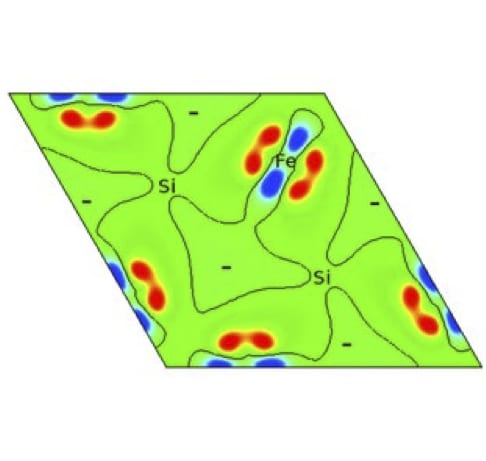 Magnetic materials with Curie temperatures near room temperature heat up or cool down in response to the application or removal of a magnetic field. When such a material is brought into a magnetic field, the entropy decrease from the field-enduced enhancement of the order of the magnetic moments causes this magnetocaloric effect. This is the basis for the deisign of magnetic refrigeration devices and the “waste” heat generated can also be transformed into electricity, making magnetic materials an attractive alternative energy source. Implementation of such technology has been hindered because suitable materials with operation temperatures between room temperature and 400 K are hard to find.
Magnetic materials with Curie temperatures near room temperature heat up or cool down in response to the application or removal of a magnetic field. When such a material is brought into a magnetic field, the entropy decrease from the field-enduced enhancement of the order of the magnetic moments causes this magnetocaloric effect. This is the basis for the deisign of magnetic refrigeration devices and the “waste” heat generated can also be transformed into electricity, making magnetic materials an attractive alternative energy source. Implementation of such technology has been hindered because suitable materials with operation temperatures between room temperature and 400 K are hard to find.
In a recent article, Ekkes Brück and co-workers report their use of first-principle calculations to design a material with a very large magnetocaloric effect. They have discovered of a new form of magnetism, in which strong (Mn) and weak (Fe) magnetic sublattices are arranged in alternating layers in the magnetic material. Tuning the composition of the material via substitutions allows the working temperature to be adjusted to enhance the favorable magnetocaloric properties. The materials used in the study are globally abundant and suitable for industrial mass production, which should allow for the design of high-performance devices using low-cost production methods.

















